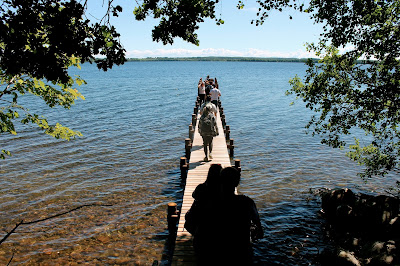Prompt
Contrast today’s experiences of a Danish National Park with America’s National Parks.
Today the class visited Kongernes (soon to be) National Park in North Zealand, Denmark. Throughout the visit, I noticed many similarities but also many differences between this park and national parks throughout the United States. For example the flora and fauna which inhabit Kongernes National Park vary from U.S. national parks. The trees that make up this park are predominately beech trees. Although the main species of trees are beech, the park also consists of conifers from other Nordic countries. In addition, Kongernes has species only native to Europe, such as the European red deer and the European badger.
The biodiversity of species is very rich in this park because of the management practices. Since the 1800s, there has been an effort to restore trees. Most of the trees in the park have been replanted, and the bogs that are there today have been constructed. This differs from the forests of national parks in the United States, because the majority of them are old growth and have never been cut down. A great example is the Sequoia National Park in California. American national parks seem to be preserving what has already been there, whereas Kongernes is recreating what was once deforested. Recreational regulations within Kongernes also vary from national parks in the United States as well. For example, biking and bonfires are allowed, whereas most U.S. national parks have stricter recreation regulation.
Another prominent difference is the size of Kongernes. The Sequoia National Park, Yellowstone National Park, and Yosemite National Park are examples of renowned U.S. national parks that are very large. Kongernes is only about 14,000 acres, whereas the Sequoia National Park is about 400,000 acres. Yosemite National Park is over 700,000 acres, and the world's first national park, Yellowstone National Park, is over an astounding 2,000,000 acres.




No comments:
Post a Comment